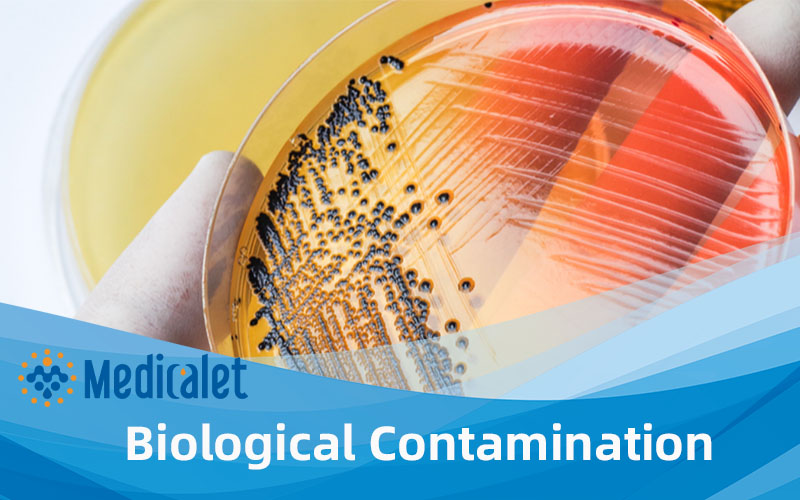
No cell culture problem is as universal as that of culture loss due to contamination. All cell culture laboratories and cell culture workers have experienced it. Culture contaminants may be biological or chemical, seen or unseen, destructive or seemingly benign, but in all cases they adversely affect both the use of your cell cultures and the quality of your research. Contamination problems can be divided into three classes:
◗ Minor annoyances — when up to several plates or flasks are occasionally lost to contamination;
◗ Serious problems — when contamination frequency increases or entire experiments or
cell cultures are lost;
◗ Major catastrophes — contaminants are discovered that call into doubt the validity of your past or current work.
What Are the Major Cell Culture Contaminants?
A cell culture contaminant can be defined as some element in the culture system that is undesirable because of its possible adverse effects on either the system or its
use. These elements can be divided into two main categories: chemical contaminants and biological contaminants. Chemical Contamination Chemical contamination is best described
as the presence of any nonliving substance that results in undesirable effects on the culture system. To define further is difficult; even essential nutrients become toxic at high enough concentrations. Nor is toxicity the only concern since hormones and other growth factors found in serum can cause changes that, while not necessarily harmful to cultures, may be unwanted by researchers using the system.
Media
The majority of chemical contaminants are found in cell culture media and come either from the reagents and water used to make them, or the additives, such as sera, used to supplement them. Reagents should always be of the highest quality and purity and must be properly stored to prevent deterioration. Ideally, they should be either certified for cell culture use by their manufacturer or evaluated by the researcher before use. Mistakes in media preparation protocols, reading reagent bottle labels, or weighing reagents are other common sources of chemical contamination.
Sera
Sera used in media have long been a source of both biological and chemical contaminants. Due to cell culture-based screening programs currently used by good sera manufacturers, it is unusual to find a lot of fetal bovine sera that is toxic to a majority of cell cultures. However, it is common to find substantial variations in the growth promoting abilities of different lots of sera for particular cell 2 culture systems, especially for cultures that have specialized or differentiated characteristics. Uncontrollable lot-to-lot variation in hormone and growth factor concentrations makes this problem inevitable; careful testing of sera before purchase, or switching to serum-free media can avoid these problems.
Water
The water used for making media and washing glassware is a frequent source of chemical contamination and requires special care to ensure its quality. Traditionally, double or triple glass distillation was considered to be the best source of high quality water for cell culture media and solutions. Newer purification systems combining reverse osmosis, ion exchange
and ultrafiltration are capable of removing trace metals, dissolved organic compounds
and endotoxins and are increasingly popular. However, these systems must be properly maintained and serviced to ensure continued water quality. Because of its aggressive solvent characteristics, highly purified water can leach potentially toxicmetal ions from glassware or metal pipes, and plasticizers from plastic storage vessels or tubing. These contaminants can then end up in media or deposited on storage vessels and pipettes during washing and rinsing. Water used to generate steam in autoclaves may contain additives to reduce scale buildup in pipes; these potentially toxic additives can also end up on glassware.
Endotoxins
Endotoxins, the lipopolysaccaridecontaining by-products of gram negative bacteria, are another source of chemical contaminants in cell culture systems. Endotoxins are commonly found in water, sera and some culture additives (especially those manufactured using microbial fermentation) and can be readily quantified using the Limulus Amebocyte
Lysate assay (LAL).
These highly biologically reactive molecules have major influences in vivo on humoral and cellular systems. Studies of endotoxins using in vitro systems have shown that they may affect the growth or performance of cultures and are a
significant source of experimental variability Furthermore, since the use of cell culture produced therapeutics, such as hybridomas and vaccines, are compromised by
high endotoxin levels, efforts must be made to keep endotoxin levels in culture systems as low as possible. In the past, sera have been a major source
of endotoxins in cell cultures. As improved endotoxin assays (LAL) led to an increased
awareness of the potential cell culture problems associated with endotoxins, most manufacturers have significantly reduced levels in sera by handling the raw products under aseptic conditions. Poorly maintained water systems, especially systems using ion exchange resins, can harbor significant levels of endotoxin-producing bacteria and may need to be tested if endotoxin problems are suspected or discovered in the cultures.
Storage Vessels
Media stored in glass or plastic bottles that have previously contained solutions of heavy metals or organic compounds, such as electron microscopy stains, solvents and pesticides, can be another source of contamination. The contaminants can be adsorbed onto the surface of the bottle or its cap (or absorbed into the bottle if plastic) during storage of the original solution. If during the washing process they are only partially removed, then once in contact with culture media they may slowly leach back into solution. Residues from chemicals used to disinfect glassware, detergents used in washing, or some aluminum foils and wrapping papers for autoclaving or dry heat sterilization can also leave potentially toxic deposits on pipettes, storage bottles and instruments.
